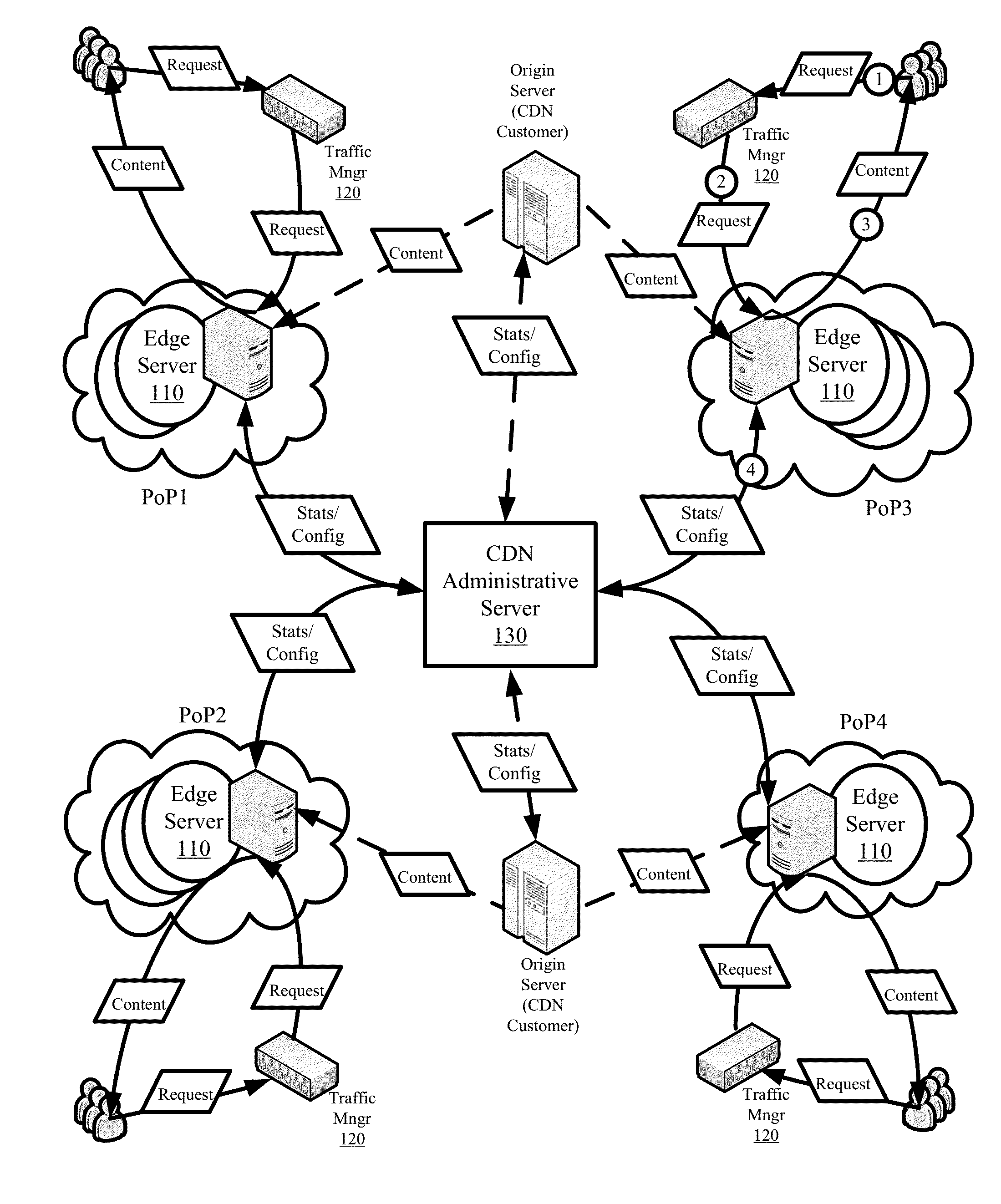Providing localized content delivery with remote token authentication
a token authentication and content technology, applied in the field of content delivery, can solve the problems of hindering cdn performance, affecting content delivery performance, and affecting the performance of cdn, so as to improve the content delivery performance
- Summary
- Abstract
- Description
- Claims
- Application Information
AI Technical Summary
Benefits of technology
Problems solved by technology
Method used
Image
Examples
Embodiment Construction
[0028]In the following detailed description, numerous details, examples, and embodiments are set forth and described. As one skilled in the art would understand in light of the present description, the described systems and methods are not limited to the embodiments set forth, and these systems and methods may be practiced without some of the specific details and examples discussed. Also, reference is made to the accompanying figures, which illustrate specific embodiments in which the invention can be practiced. It is to be understood that other embodiments can be used and structural changes can be made without departing from the scope of the embodiments herein described.
[0029]FIG. 2 illustrates an exemplary architecture in which the systems and methods of some embodiments can be implemented. The architecture depicts two points-of-presence (PoPs) 210 and 215 under control of a first network, a second network 220 that is operated independent of the first network, and a third network ...
PUM
 Login to View More
Login to View More Abstract
Description
Claims
Application Information
 Login to View More
Login to View More - R&D
- Intellectual Property
- Life Sciences
- Materials
- Tech Scout
- Unparalleled Data Quality
- Higher Quality Content
- 60% Fewer Hallucinations
Browse by: Latest US Patents, China's latest patents, Technical Efficacy Thesaurus, Application Domain, Technology Topic, Popular Technical Reports.
© 2025 PatSnap. All rights reserved.Legal|Privacy policy|Modern Slavery Act Transparency Statement|Sitemap|About US| Contact US: help@patsnap.com



